Crete
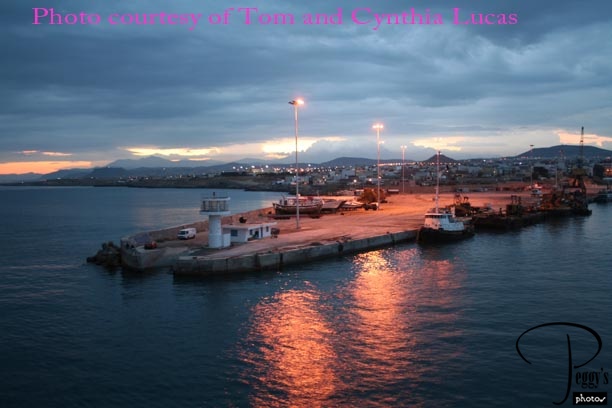
We had two ports of call today. First was Herakleion (also spelled Iraklion) on the island of Crete, the largest of the Greek Islands and the location of the Minoan civilization, 2600–1400 B.C. We docked quite early in the morning as can be seen from this beautiful photo of Tom and Cynthia Lewis.

Crete
Crete
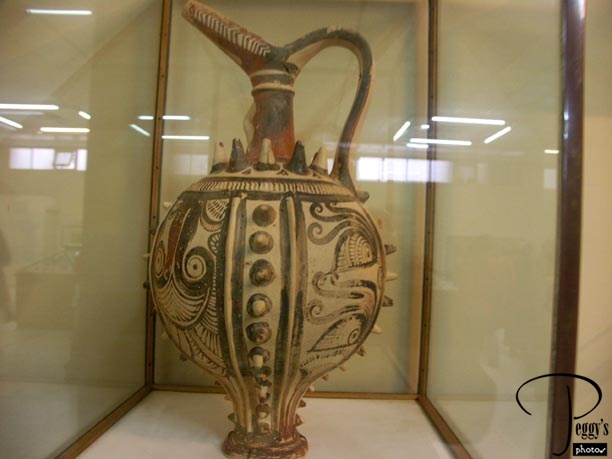
I signed up for an optional tour to the Palace of Knossos and the Musuem of Heralkeion (55 euros). We were supposed to first visit the palace and then the museum. However, it started to drizzle outside and then rain heavily, so the tour was changed to go to the museum first. However, we had to wait 1/2 hour outside the museum before it would open. The Museum of Herakleion houses the world’s most important collection of Minoan artifacts. The items in the museum come from all over Crete, not only from the Palace of Knosses. I have put a slide show on this site (go to Slide Shows, Westerm Europe, Greece, “Crete: Museum of Heraklion”) of part of the collection, one that easily shows through the artifacts how highly sophisticated was the Minoan civilization of over 3,000 years ago––on the slide show, you will see clay coffee cups, very decorative vases, and even an early tote bag. You’ll also begin the notice that many of the designs on and the shapes of their pottery are still in use today. Photo of one of the vases I particulary liked. After viewing the museum, we next went to visit the Palace of Knosses. It had stopped raining. Luckily, there was a snack stand outside the museum where I could purchase some cough drops. A virus was going around our tour group––running nose, scratchy throat, and then a cough. I now had progressed to the coughing part.

Crete
Palace of Knosses

Model at the museum of the Palace of Knosses. The palace was built around a large central courtyard and had probably over 1500 rooms. The west side of the palace was usually three stories and the east side was mainly four or five stories. It had numerous corridors and was almost a maze–like structure. This building plan may have led to the Labyrinth of Greek Mythology, which told of a layrinth built by King Minos to hold the Minotaur, a creature that was half–man and half–bull, which was eventually killed by the Athenian hero Thesus.

Palace of Knosses
Palace of Knosses
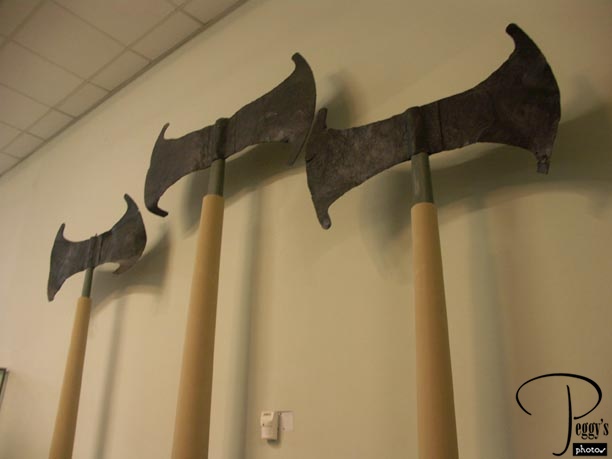
The Labyrinth at Knosses was believed to be the dwelling place of the double axe, some of them pictured in this photo. The Minoan double axe was a common tool used by tradespeople and was also a sacred symbol thought to be a cult object connected to the mother goddess.

Palace of Knosses
Palace of Knosses
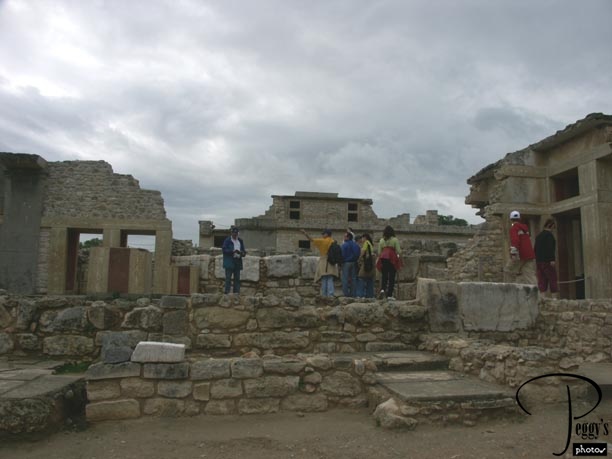
The first palace at Knosses was built around 2000 B.C., which was destroyed by an earthquake in 1700 B.C. The new palace, the largest of the Minoan palaces, was constructed immediately afterward. Again, it was destroyed, this time by a fire in the mid–14 century B.C. and the site now longer functioned as a palace. The first excavation of the Palace of Knosses was in 1878 by Mino Kalokairinos, a Cretan merchant. In 1900, a systematic excavation of the palace was done under the direction of Arthur Evans, the director of a museum in Oxford, England. In almost all cases, anything that you see in the following photos that does not look like a ruin––such as, painted columns and brightly colored frescoes, has been reconstructed. This photo shows some of the ruins of the palace.

Palace of Knosses
Palace of Knosses
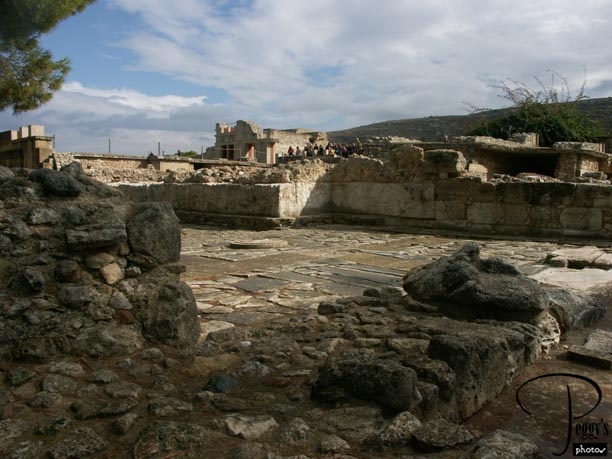
The West Porch and the Corridor of the Procession. The porch was roofed and opened into a court and was supported by one column, part of its base, seen in the middle of the photo, still remaining and which can be seen in the photo. The porch began the long Corridor of the Procession, which was named after a very long wall painting depicting a procession of people holding gifts and of musicians.

Palace of Knosses
Palace of Knosses
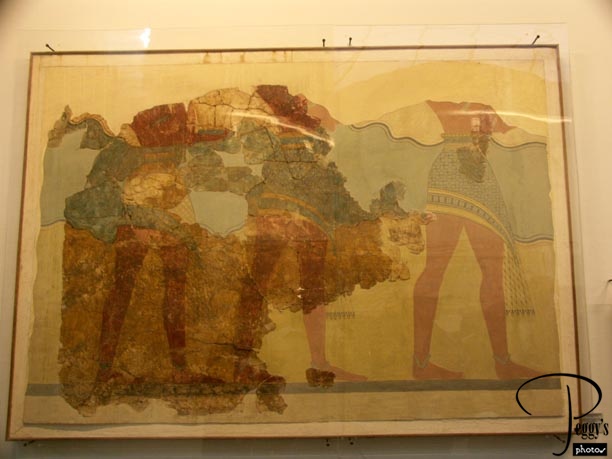
Part of the original of the Corridor of the Procession fresco hanging in the Museum of Heraklion.

Palace of Knosses
Palace of Knosses
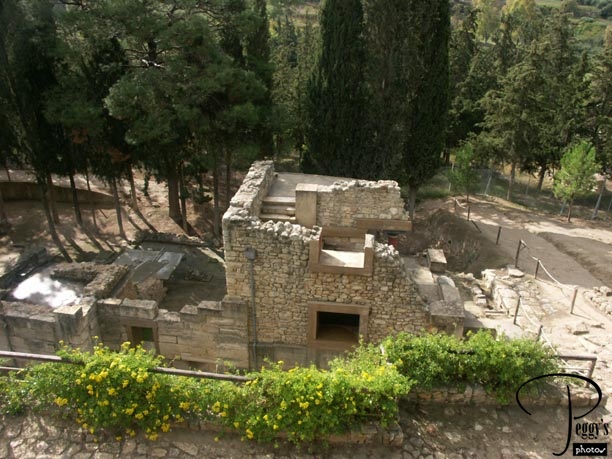
The South House. This was probably three stories high and the house of a palace official.

Palace of Knosses
Palace of Knosses
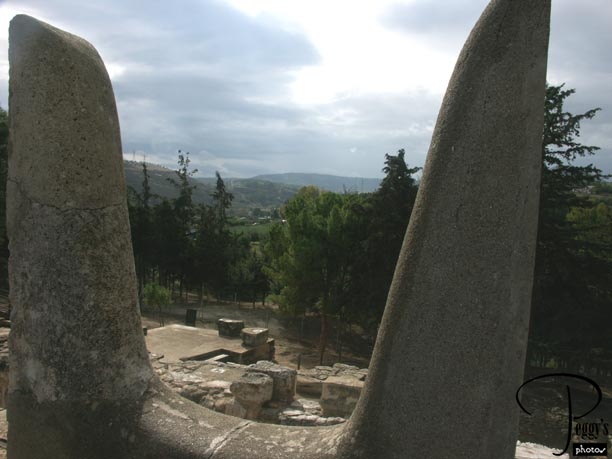
The Horns of Consecration. This was a representation of a sacred bull. The horns would have adorned the top of the palace. Mount Jouctas is in the background, which was the sacred place of the mother goddess, who was the source of fertility and life.

Palace of Knosses
Palace of Knosses
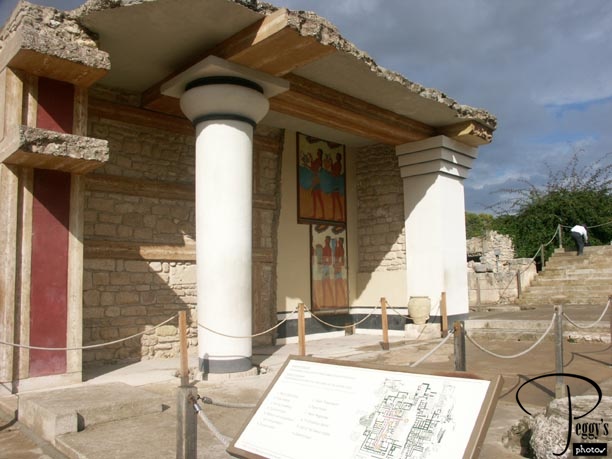
South Propylon (entrance to the palace). Note the two different styles of the columns. A fresco named the Cup–Bearer is on the wall.

Palace of Knosses
Palace of Knosses
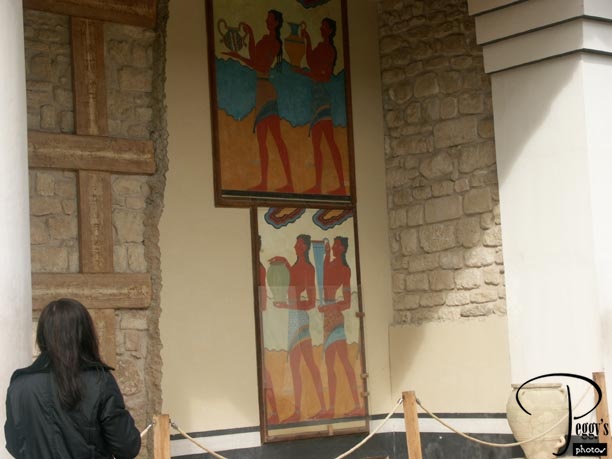
Close–up of the Cup–Bearer. This figure appeared as a detail in the Procession fresco.

Palace of Knosses
Palace of Knosses
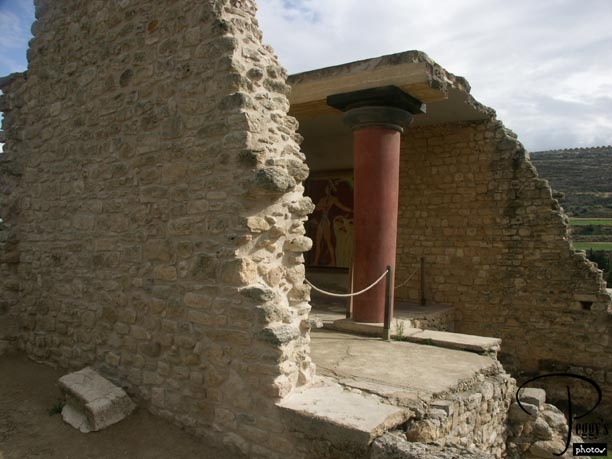
Part of a pillared hall at the south side of the court. The column’s shaft is painted black and its capital red. Other columns of the palace were painted just the opposite. You can also make out the fresco of the Priest–King on the wall.

Palace of Knosses
Palace of Knosses
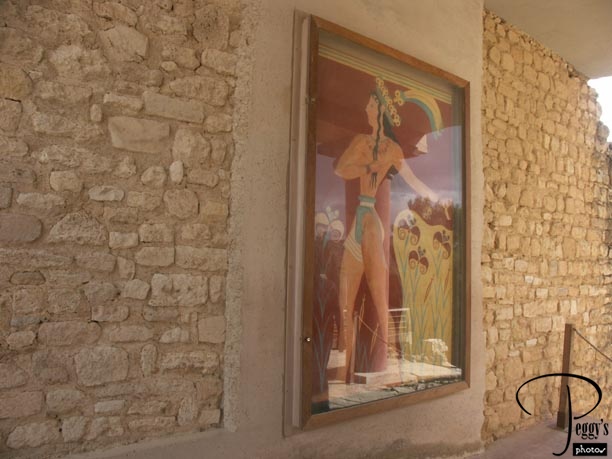
Close–up of the Priest–King fresco. This is also known as the Prince of the Lilies and is a detail from the Procession fresco. It depicts a figure wearing a crown of lilies and feathers.

Palace of Knosses
Palace of Knosses
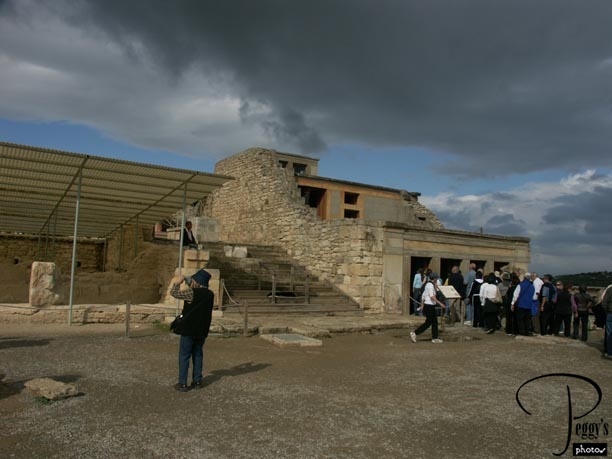
Stepped porch on the side of the King’s Throne Room.

Palace of Knosses
Palace of Knosses
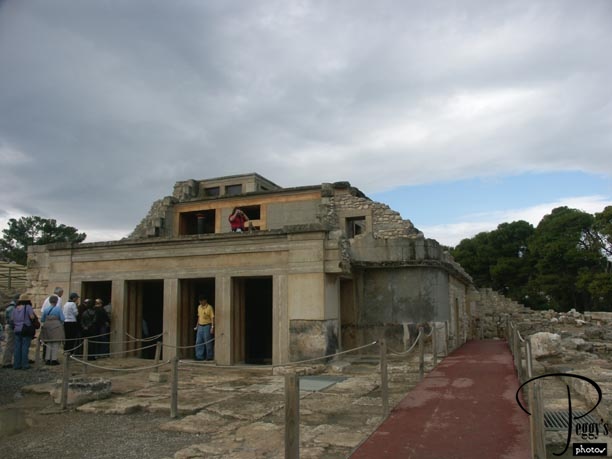
Entrance to the King’s Throne Room.

Palace of Knosses
Palace of Knosses
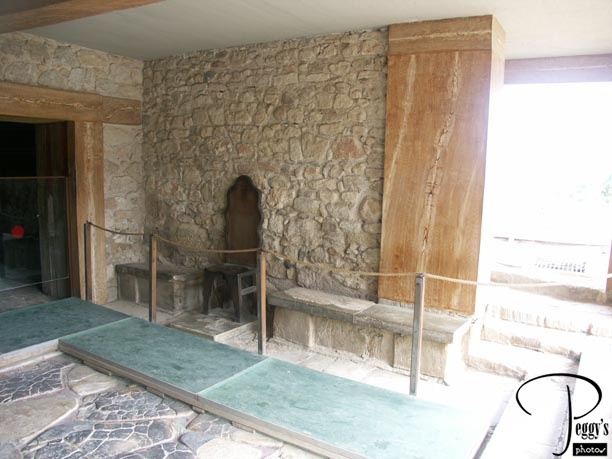
Antechamber to the Throne Room with a wooden re–creation of the throne of King Minos.

Palace of Knosses
Palace of Knosses
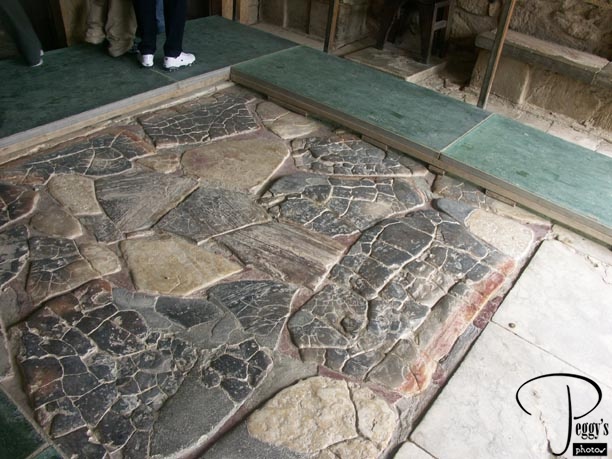
Gypsum floor of the Antechamber.

Palace of Knosses
Palace of Knosses
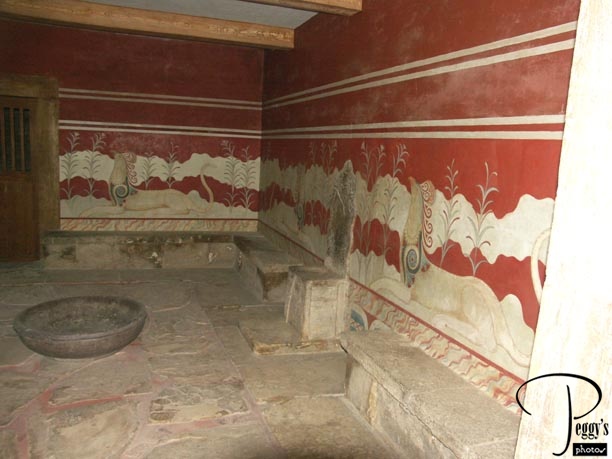
The gypsum Throne of King Minos. In Greek Mythology, Minos was a semi–legendary king of Crete. The Minoan civilization takes its name from him. However, it is not known if Minos was the name of a specific king or if Minos is the Cretan word for king, hence there being more than one Minos. The Throne of King Minos is the earliest surviving throne of the Western World. Around the walls are stone benches, probably for the priests. Along the walls are frescoes of griffins in a field of lilies. The lily is a symbol of royalty.

Palace of Knosses
Palace of Knosses
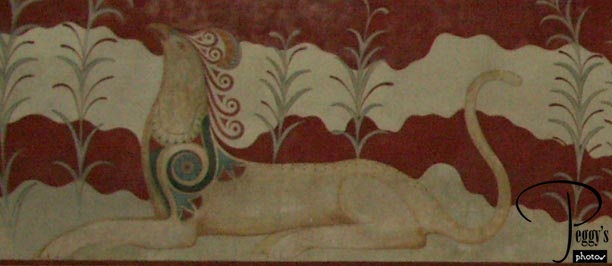
Close–up of a griffin. A griffin is a mythical animal having the head, forepart, and wings of an eagle and the body, hind legs, and tail of a lion.

Palace of Knosses
Palace of Knosses
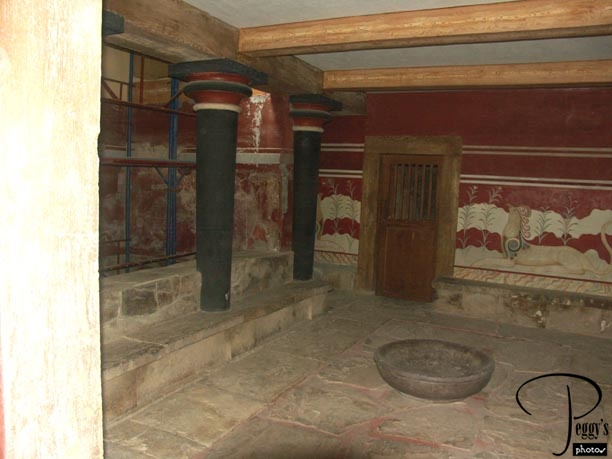
Other side of the Throne Room.

Palace of Knosses
Palace of Knosses
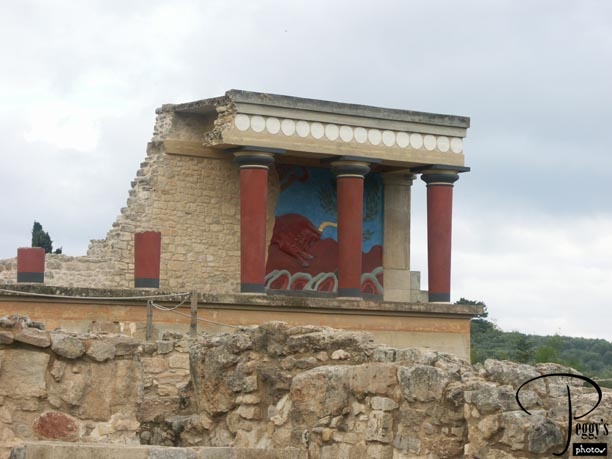
North Propylon. The goods and materials brought to the palace from the harbor entered through this gate. You can make out the fresco a bull on the wall.

Palace of Knosses
Palace of Knosses
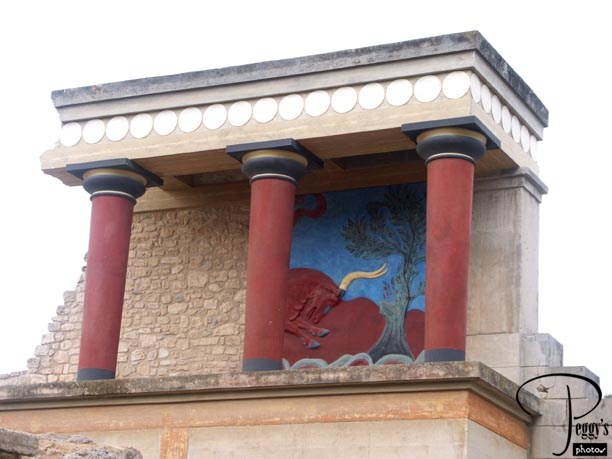
Closer–up view of the bull fresco. The bull is a fertility symbol.

Palace of Knosses
Palace of Knosses
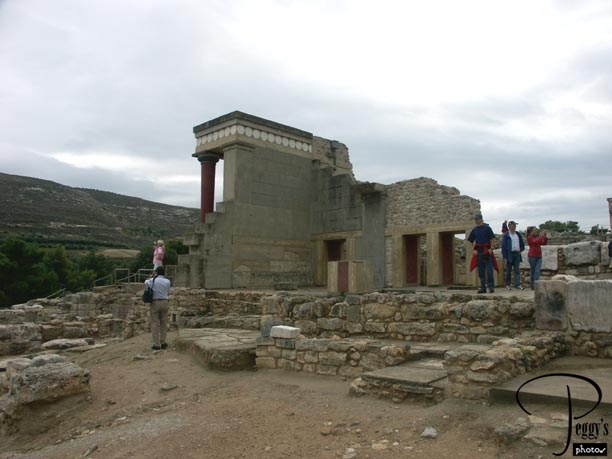
Back of the North Propylon.

Palace of Knosses
Palace of Knosses
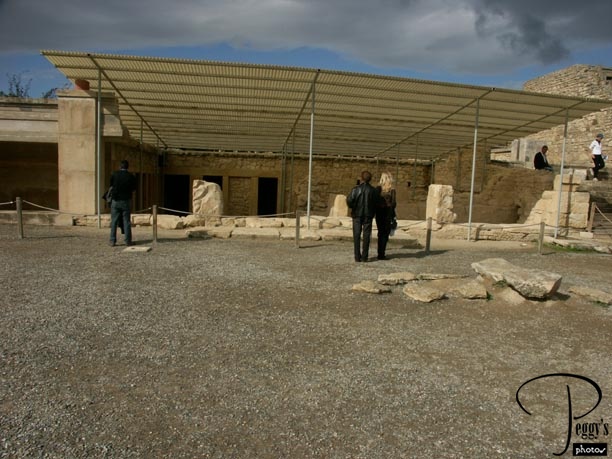
The Royal Apartments. We didn’t visit the Queen’s Apartments or the Queen’s Bathroom. I believe they were blocked off to visitors.

Palace of Knosses
Palace of Knosses
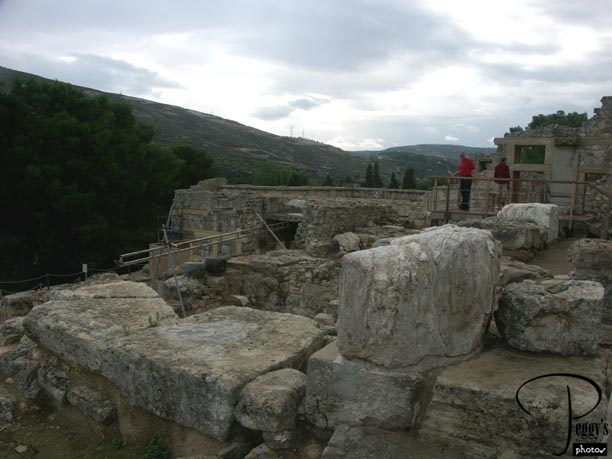
You can easily get confused at the palace as to what building is what, but I believe that this photo also shows part of the Royal Apartments.

Palace of Knosses
Palace of Knosses
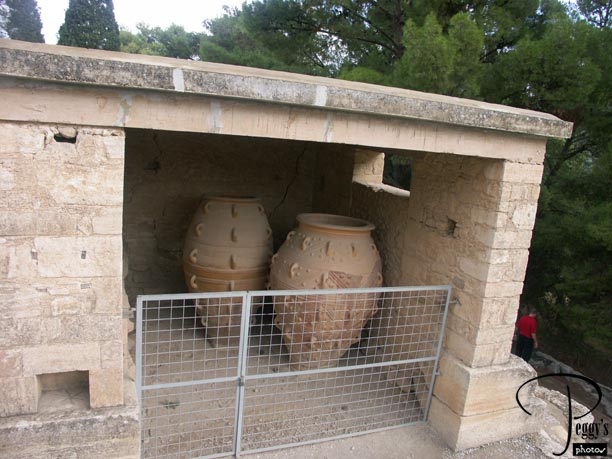
Giant Pithoi (storage jars). Over 100 giant pithoi were unearthed at Knosses. The jars were used to store the palace supplies.

Palace of Knosses
Palace of Knosses
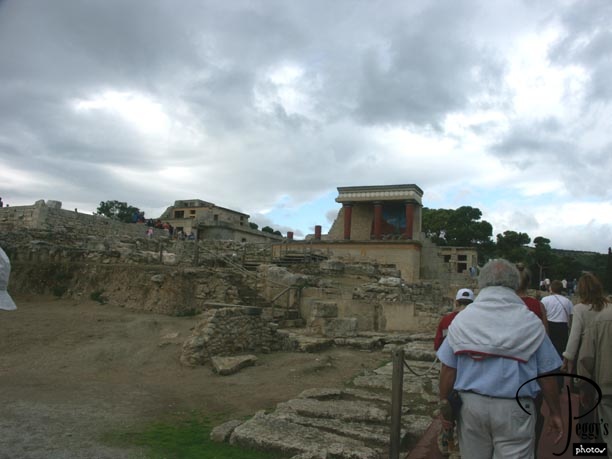
View of the South Propylon on the right and the Throne Room on the left.

Palace of Knosses
Palace of Knosses
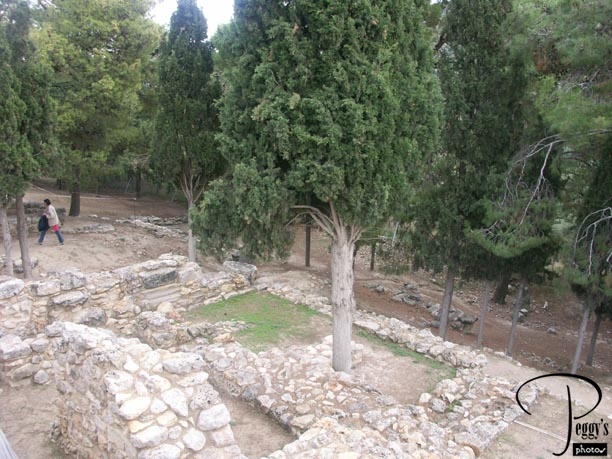
More of the ruins.

Palace of Knosses
Palace of Knosses
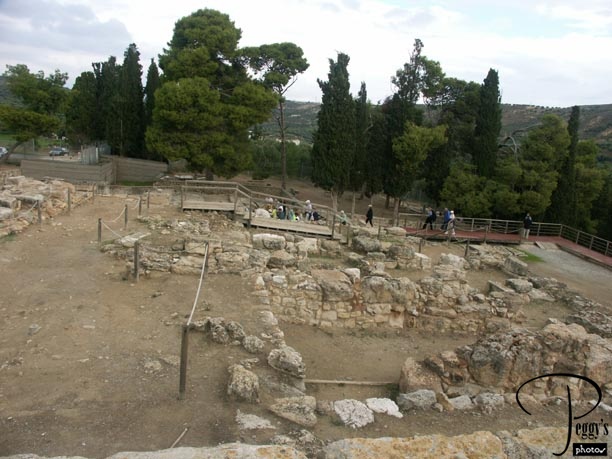
More of the ruins.

Palace of Knosses
Palace of Knosses

More of the ruins.

Palace of Knosses
Palace of Knosses
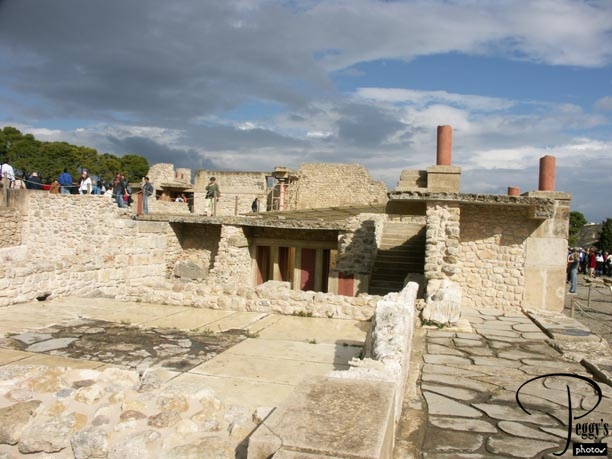
More of the ruins.

Palace of Knosses
Palace of Knosses
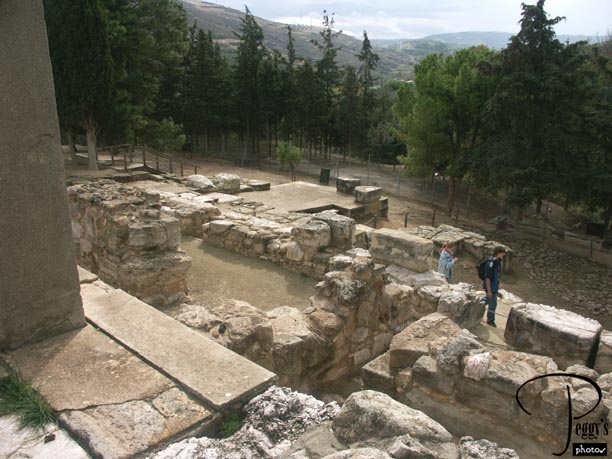
More of the ruins.

Palace of Knosses
Palace of Knosses

The Royal Road or the Theatre. Arthur Evans called this road the Theatre as it reminded him of one. There was a platform and a row of stairs that formed an angle. It is believed that people watched ceremonies here.

Palace of Knosses
Palace of Knosses

On our way out of the Palace of Knosses.

Palace of Knosses
Crete
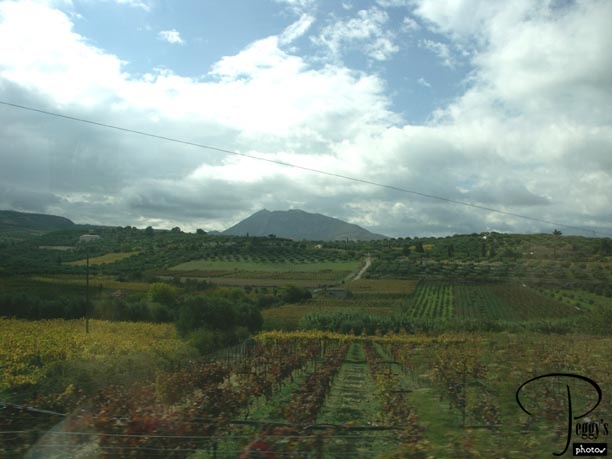
Our bus took us back to the harbor at Heraklion to our ship. We were soon to depart to our next port of call of the day: Santorini. The photos of our visit there will be on the next album. Photo: The countryside of Crete seen from our bus.

Crete
Santorini
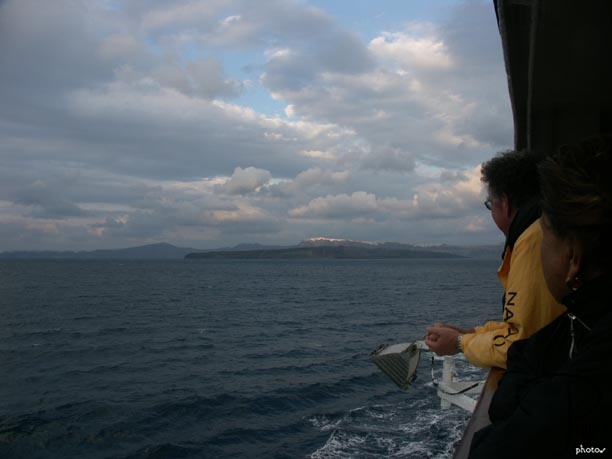
Coming into the Greek island of Santorini, one of the Cyclades Islands. Santorini was colonized by the Minoans in 3000 B.C. In 1450, this volcanic island erupted and left it with its crescent shape and also made it a candidate to be the lost island of Atlantis. Santorini was named after St. Irene by the Venetians after conquering the island in the 13th century. White villages cling on the volcanic cliffs above black sand beaches. From a distance, the white houses look like snow on top of the cliffs.

Santorini
Santorini
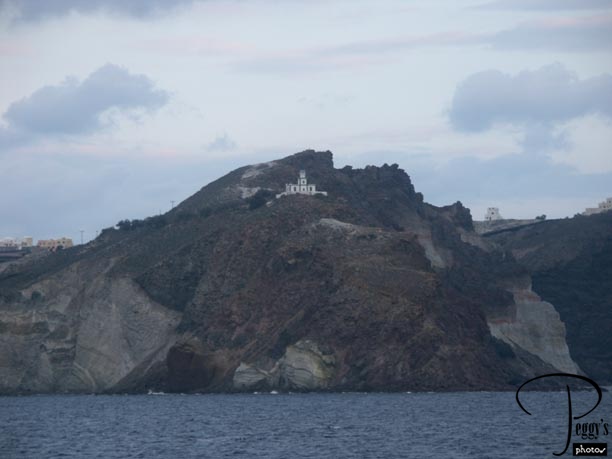
Lighthouse on one of the cliffs.

Santorini
Santorini
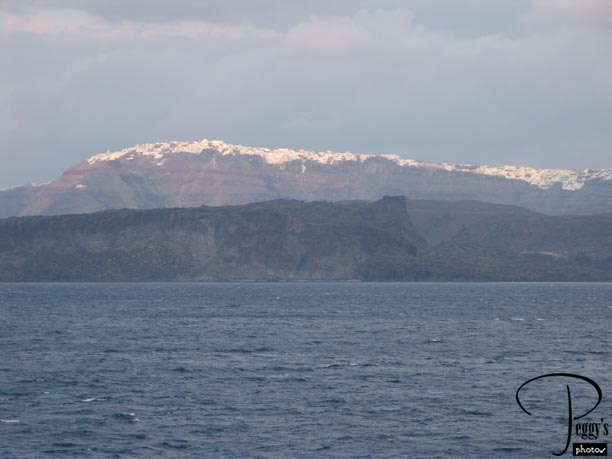
Closer–up view of the houses along the top of the cliff.

Santorini
Santorini
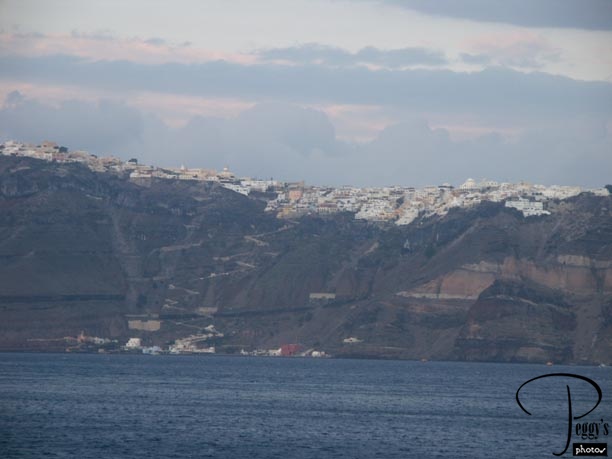
Even closer–up view.

Santorini
Santorini
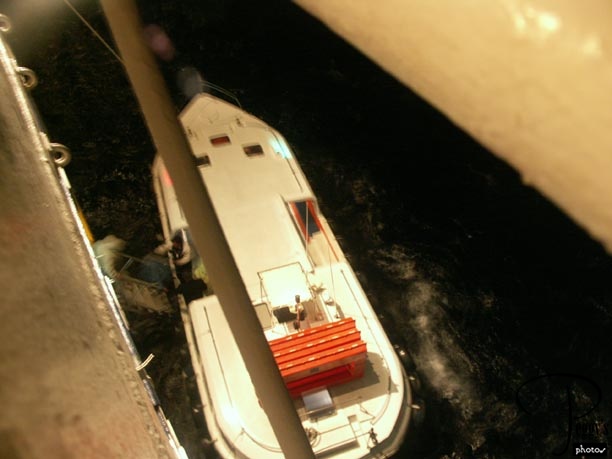
We had a choice of going off by tender either to take a combined tour of Thira (the capital of Santorini) and Oia Village (a reconstructed typical Greek island village) or to take a walking tour of only Thira with Sabrina, our Trafalgar tour guide. Sabrina told us that it would be too dark by the time we reached Oia Village to see much of anything there––she was right as confirmed by some people I talked to later who took that tour. However, the people who took the combined tour got off first on tenders at a different port than we would. It was already dark when they were disembarking and we left on the ship did notice how choppy the water was. Our ship left the port for those visiting Oia Village and sailed around for close to 45 minutes or so––we were wondering why. We were finally told that the captain was trying to find calm–enough waters for us to be able to get off the ship. The ship stopped and it was announced that we could now line up for go off on the tenders. We all looked down into the water––it was black and very very choppy. The sky was pitch black as well and no lights could be seen on the shore––definitely a bit scary. About half of our Trafalgar group said no way were they going to risk it and the other half lined up to take a tender across the choppy waters. I debated which group I was to be part of, but Eleanor was going to go––and if Eleanor, who I consider to be a very pratical person, was going to go, then so was I. I followed her into the tender and then prayed. Actually, the tender ride was much smoother going into the Port of Skala Firon than I thought it would be. Photo of our tender.

Santorini
Santorini

Once on the dark but steady dock, there are three ways up to the top of the cliff. One is by walking up 587 steps; one is by taking a donkey up those same 587 steps; and the third is by cable car. I think that we all took the cable car. I didn’t see any donkeys here––perhaps they do not make the climb at night. We were told beforehand not to take a donkey down the cliff as the donkeys get fed at the bottom and tend to go so fast down that you may make it down before they do.

Santorini
Santorini
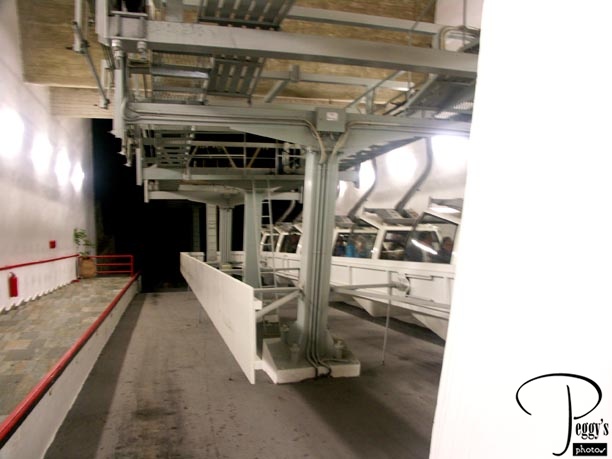
The cable car. Looked safe. But we were going up a steep cliff in it––about 1000 feet up. We went up almost at a straight angle and also very rapidly. I found someone’s husband’s arm to hold onto.

Santorini
Walk Through Thira
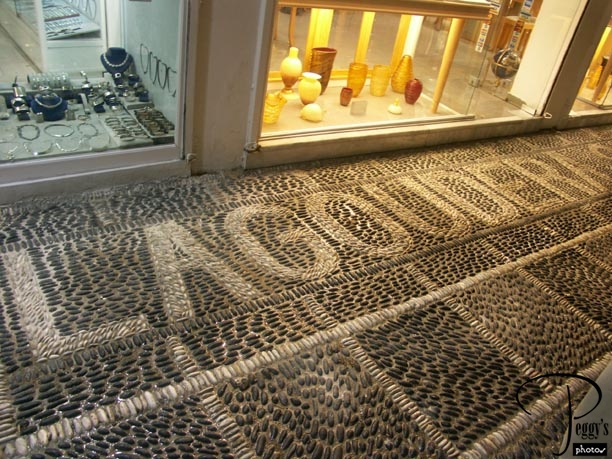
Thira (also called Fira) is Santorini’s capital, founded in the 18th century. It was devasted by an earthquake in 1956 and then rebuilt after the quake. Pebbled street.

Walk Through Thira
Walk Through Thira
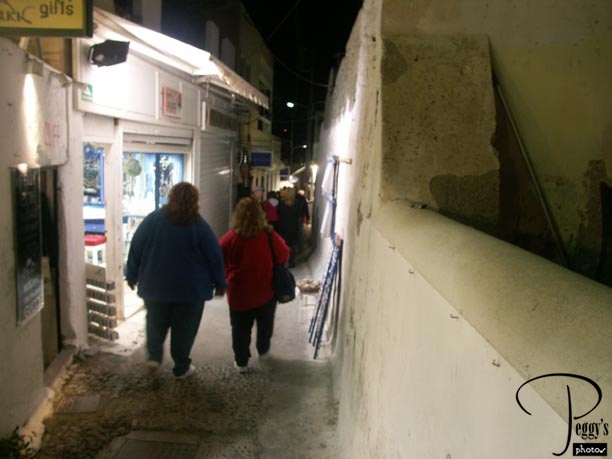
Street scene.

Walk Through Thira
Walk Through Thira
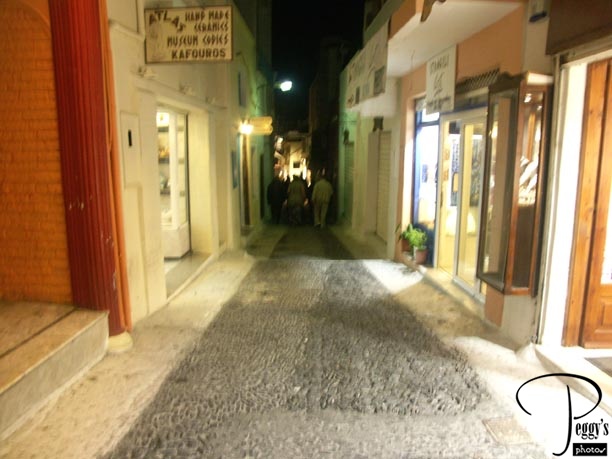
Street scene.

Walk Through Thira
Walk Through Thira
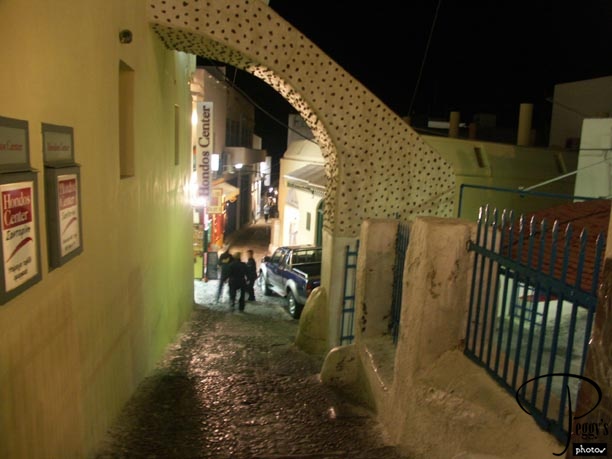
Street scene.

Walk Through Thira
Walk Through Thira
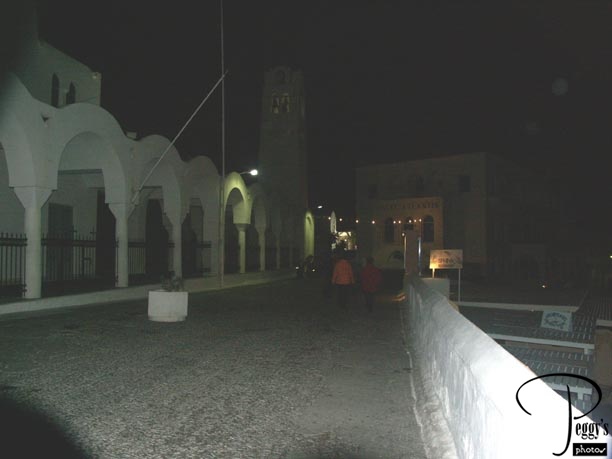
Clock tower.

Walk Through Thira
Walk Through Thira
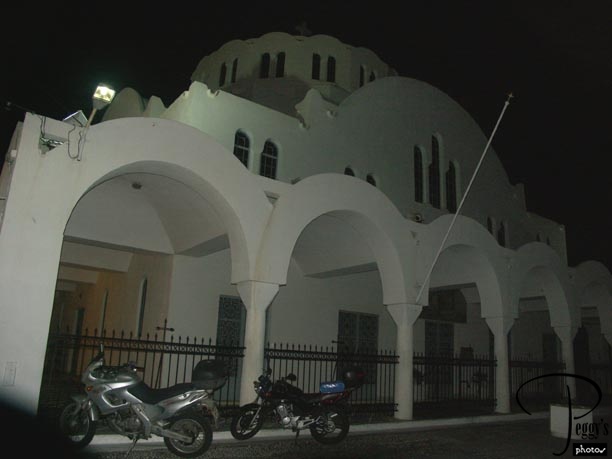
Church?

Walk Through Thira
Walk Through Thira
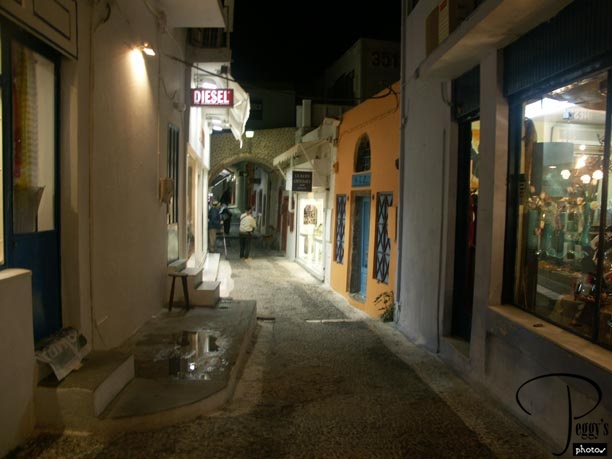
Street scene.

Walk Through Thira
Walk Through Thira
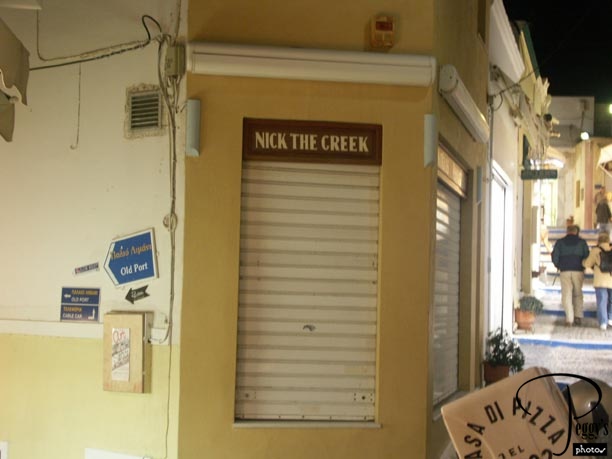
Nick the Greek. Too bad that it was shuttered. I would have liked to know what the store’s business is.

Walk Through Thira
Walk Through Thira
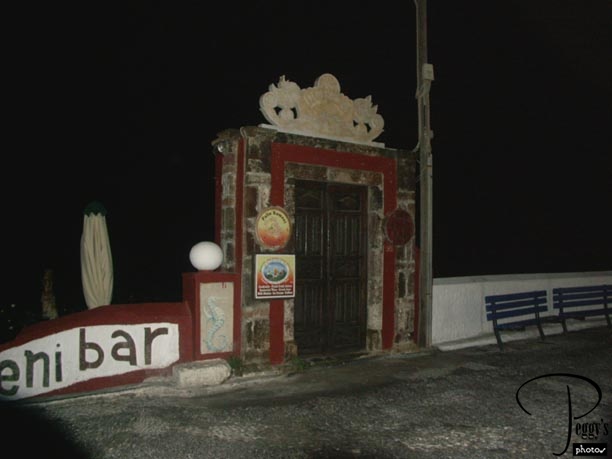
When Thira was rebuilt after the earthquake, terraces were built into the volcanic cliffs for hotels, restaurants, bars, etc. Door down to one of the cliff establishments.

Walk Through Thira
Walk Through Thira
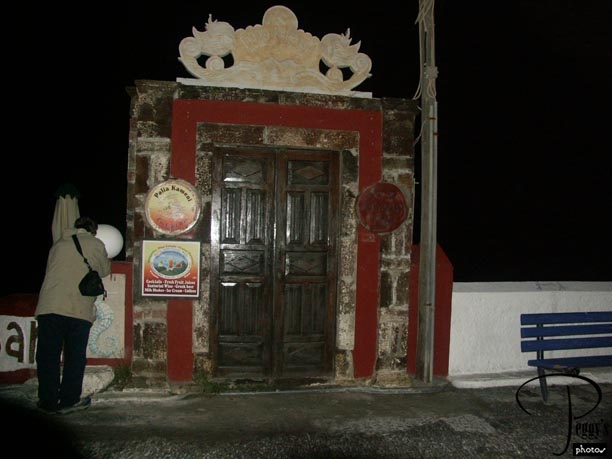
Close–up of the colorful door.

Walk Through Thira
Walk Through Thira
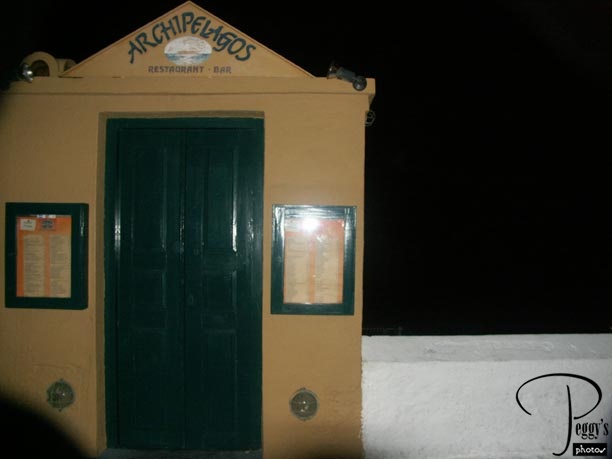
Another door.

Walk Through Thira
Walk Through Thira
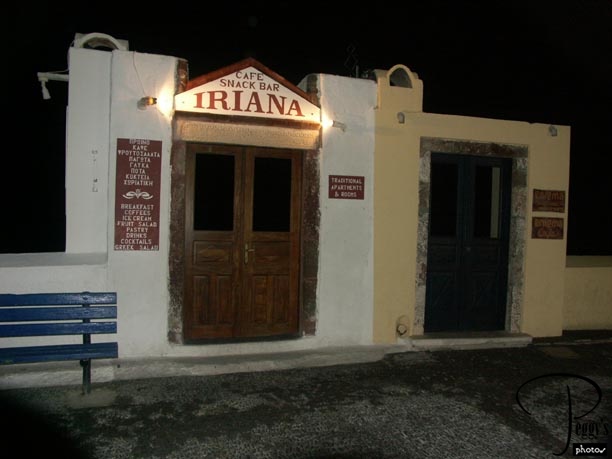
Another door.

Walk Through Thira
Walk Through Thira
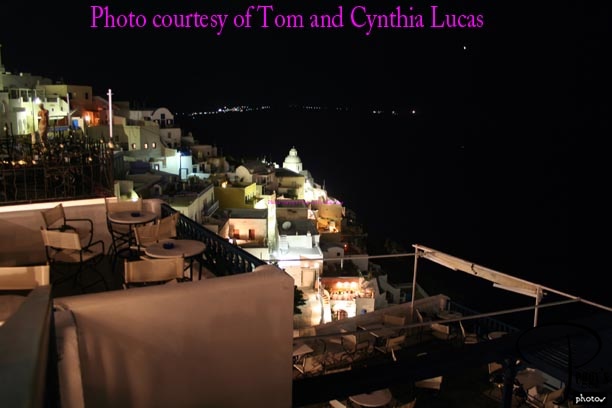
A beautiful photo from Tom and Cindy Lucas of the scene below the cliff.

Walk Through Thira
Walk Through Thira
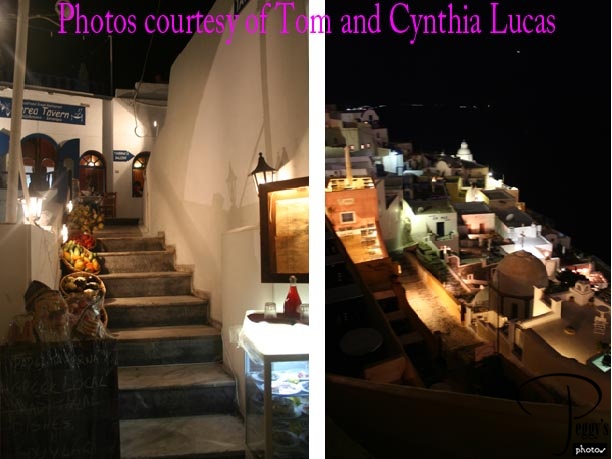
Two more beautiful photos from Tom and Cindy. Street scene on the left and below the cliff on the right.

Walk Through Thira
Walk Through Thira
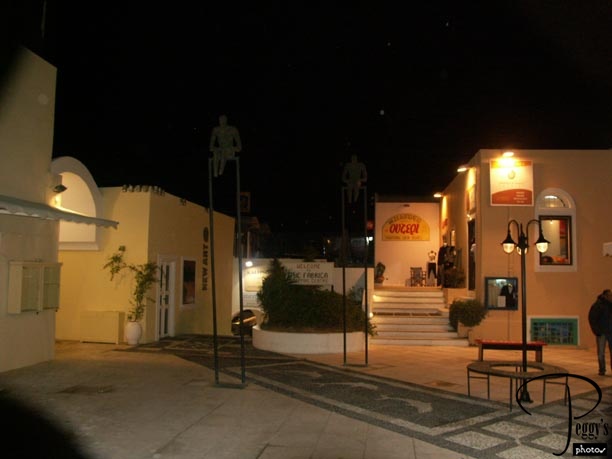
Street scene.

Walk Through Thira
Walk Through Thira
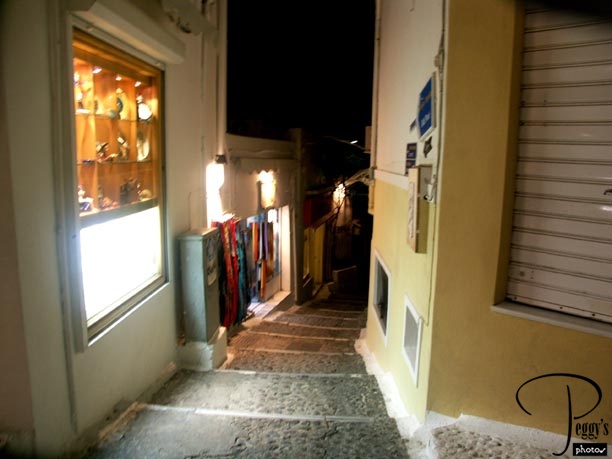
Street scene.

Walk Through Thira
Walk Through Thira
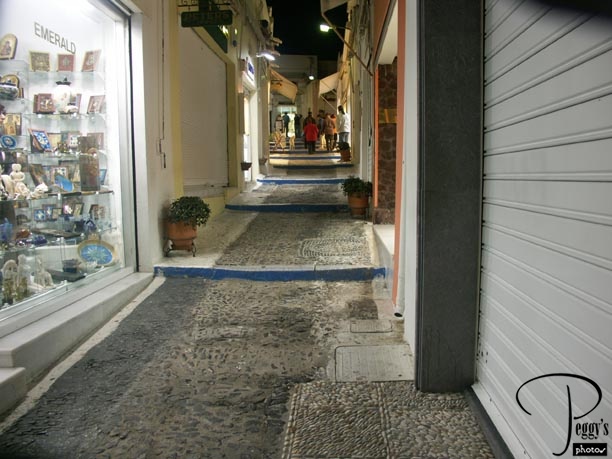
Many of the stores were already shuttered for the night.

Walk Through Thira
Walk Through Thira
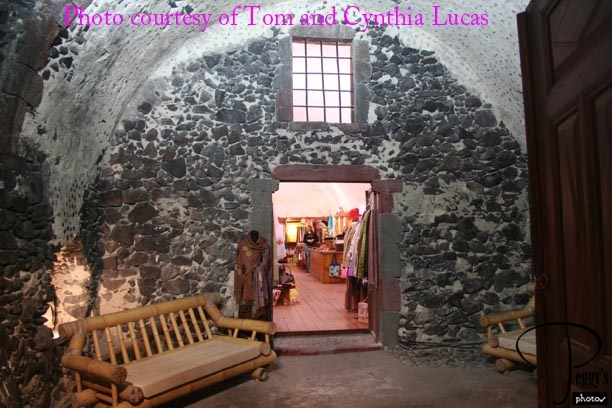
One of the stores still open. Photo of Tom and Cindy Lucas.

Walk Through Thira
Walk Through Thira
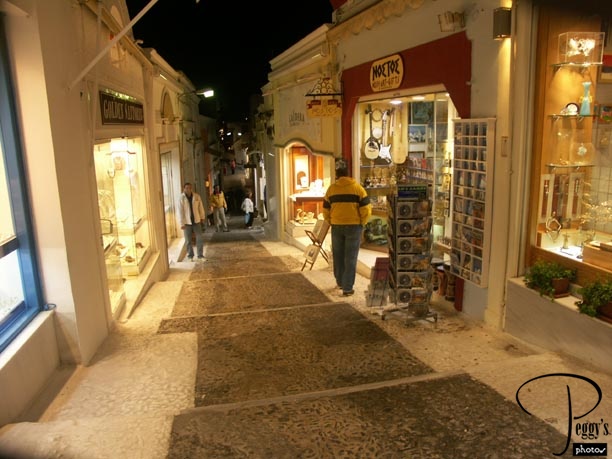
Street scene.

Walk Through Thira
Santorini
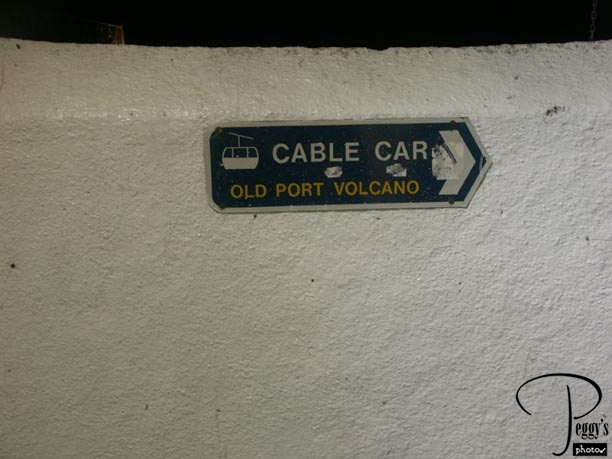
Sign back to the cable car. The cable car went down the same way it came up––fast and at an almost straight angle.

Santorini
Santorini
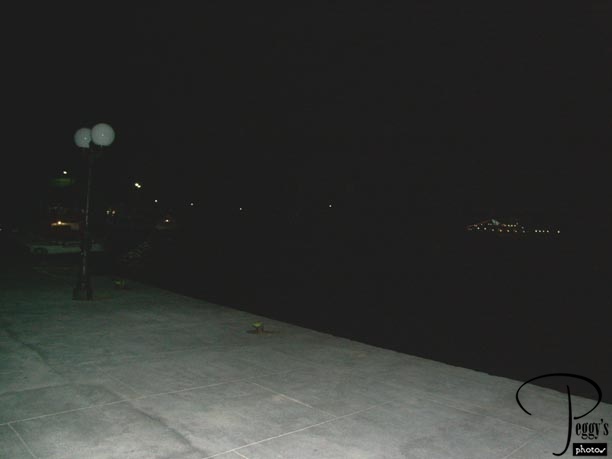
Time to get back on the tender back to our ship. That is our ship in the photo––lights on the right. The ride back was not smooth, but, rather, very choppy. I did mind games and thought of the worst boat ride that I had even been on and realized this was not as bad and only about a 10–15–minute trip. It worked. Then when I saw how much the boat was rocking when we were tied up to the ship, I did mind games again and thought of the worse boat debarkation that I have ever had. This was not to be so bad and there were two very weathered and very strong Greek men helping us back on our ship. I was very happy to be back on the Serenade and also glad that I did go off to see Santorini. Our ship set sail for Piraeus, where our Aegean journey had begun.

Santorini
Thira
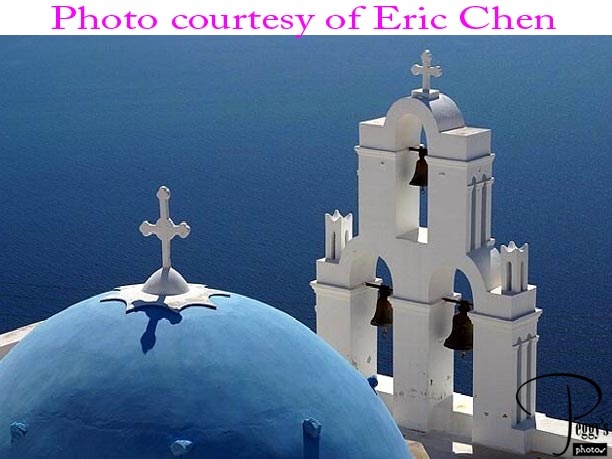
We were all disappointed that we did not get to see Thira in the daylight and to be able to take the classic photo of the 18th century Church of Agios Minas on the side of the cliff. This is not only the symbol of Santorini, but also one of the most–often used scenes to sell travel to Greece. Luckily, one of the Trafalgar Serenade group (Eric Chen) went back to Santorini after our tour and took this classic photo.

Thira
Thira
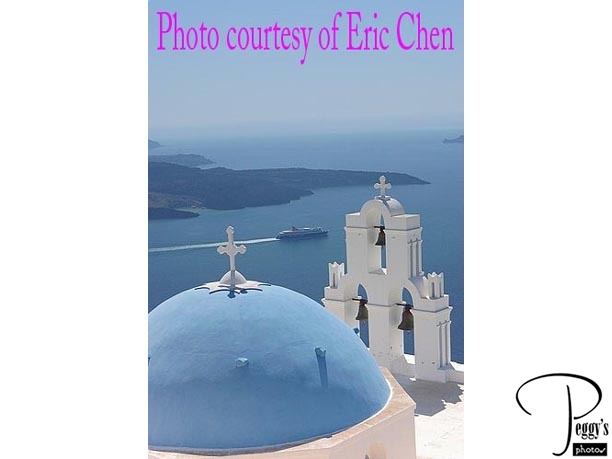
Another view of Agios Minas taken by Eric.

Thira
Thira
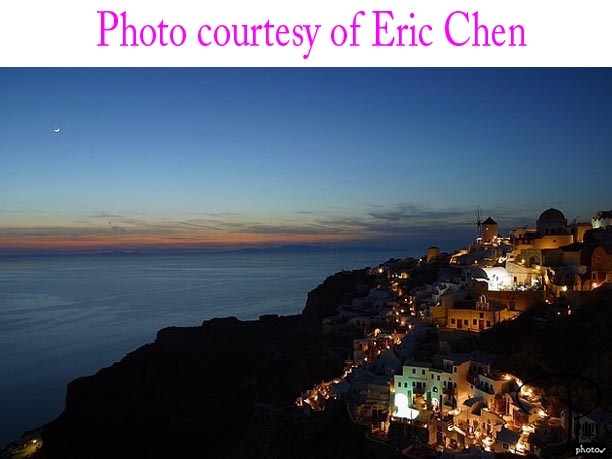
Thira at night, also taken by Eric.
